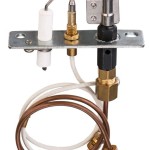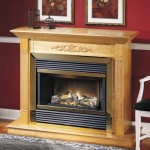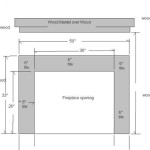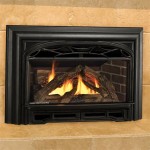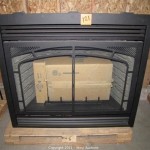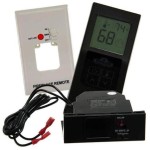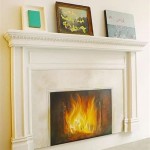How To Decorate a Fireplace Mantel and Hearth
The fireplace often serves as a focal point within a room, demanding attention and setting the overall aesthetic tone. The mantel and hearth are integral components of the fireplace, offering a canvas for decorative expression and seasonal transformations. Effectively decorating these elements requires careful consideration of style, balance, and the room's existing décor. This article outlines practical approaches to designing and implementing successful fireplace mantel and hearth decorations.
Understanding the Architectural Style and Space
Before initiating any decorating endeavor, it's crucial to analyze the architectural style of the fireplace and the surrounding space. Traditional fireplaces, often characterized by ornate carvings and classic materials like marble or brick, demand a different approach compared to modern fireplaces featuring clean lines and minimalist designs. The existing color palette, furniture arrangement, and overall room dimensions must also inform the decorating choices. A large, elaborate arrangement might overwhelm a small room, while a minimalist approach could appear insignificant in a grand space.
Assess the inherent features of the fireplace itself. Is the mantel deep and wide, providing ample space for displaying various items? Or is it narrow and shallow, requiring a more streamlined and curated approach? Consider the material of the hearth: is it a smooth, polished stone, a textured brick, or a painted surface? The existing texture and color will influence the selection of decorative elements. Photographic documentation of the existing space can be beneficial for visualizing different design options and facilitating informed decision-making.
Furthermore, consider the functional role of the fireplace. Is it actively used for burning wood, or is it primarily decorative? If the fireplace is in frequent use, heat-resistant materials and arrangements that minimize the risk of fire hazards are essential. Decorative items should be placed at a safe distance from the firebox and be sturdy enough to withstand potential vibrations or accidental contact. If the fireplace is purely decorative, the constraints are fewer, allowing for a wider range of materials and arrangements.
Achieving Balance and Visual Harmony
Balance is a fundamental principle of design, and it plays a critical role in creating visually appealing fireplace mantel and hearth arrangements. Symmetrical balance, where identical elements are mirrored on either side of a central point, creates a formal and traditional aesthetic. This approach often involves placing matching candlesticks, vases, or picture frames on either end of the mantel, with a larger, more prominent item in the center, such as a mirror or a piece of art. Symmetrical balance provides a sense of order and stability.
Asymmetrical balance, on the other hand, achieves visual equilibrium through the arrangement of dissimilar objects. This approach offers greater flexibility and allows for more personalized and dynamic compositions. To achieve asymmetrical balance, consider the visual weight of each element. Larger or darker objects appear heavier than smaller or lighter ones. Grouping several smaller items together can balance a single, larger object on the opposite side of the mantel. The goal is to create a sense of equilibrium without mirroring the elements exactly.
Scale is another important factor to consider. The size of the decorative items should be proportionate to the size of the mantel and the hearth. Objects that are too small will appear insignificant, while items that are too large will overwhelm the space. A good rule of thumb is to vary the heights and dimensions of the objects to create visual interest and prevent the arrangement from appearing monotonous. Layering objects, placing smaller items in front of larger ones, can also add depth and dimension to the display.
Color harmony is crucial for creating a cohesive and visually pleasing aesthetic. The colors of the decorative items should complement the existing color palette of the room and the fireplace itself. Consider using a color scheme that incorporates a dominant color, an accent color, and a neutral color to create a balanced and harmonious look. Using the same color in varying shades and textures can also add depth and visual interest. Consider the use of metallics, such as gold, silver, or bronze, to add a touch of glamour and sophistication. However, use metallic accents sparingly to avoid overwhelming the space.
Selecting and Arranging Decorative Elements
The selection of decorative elements is a highly personal process, reflecting individual tastes and preferences. However, certain items are commonly used and can be adapted to various styles. Mirrors are a popular choice for mantel decoration, as they reflect light and create the illusion of more space. A large, ornate mirror can serve as a focal point, while smaller mirrors can be incorporated into a more layered arrangement. Artwork, such as paintings, prints, or photographs, can also add personality and visual interest to the mantel. Choose artwork that complements the room's overall style and color palette.
Candles and candlesticks are versatile decorative elements that can add warmth and ambiance to the fireplace. Vary the heights and styles of the candlesticks to create visual interest. Unscented candles are generally preferable, as strong fragrances can be overpowering. Decorative vases and containers can be used to display flowers, greenery, or other natural elements. Choose vases that complement the room's style and color palette. Greenery, such as branches, leaves, or potted plants, can add a touch of freshness and vitality to the mantel.
Books can be arranged in stacks or leaned against the wall to add a touch of intellectual charm. Choose books with attractive covers or spines that complement the room's color scheme. Decorative objects, such as sculptures, figurines, or curiosities, can add personality and visual interest to the mantel. Choose objects that reflect your personal interests and style. The hearth itself can be decorated with larger items, such as baskets filled with firewood, decorative logs, or potted plants. Consider the safety of the items and ensure that they are placed at a safe distance from the firebox if the fireplace is in use.
Arranging the decorative elements involves careful consideration of height, width, and depth. Start by placing the largest items first, such as the mirror or artwork, and then arrange the smaller items around them. Vary the heights of the objects to create visual interest and prevent the arrangement from appearing flat. Overlapping some of the objects can add depth and dimension to the display. Step back periodically to assess the arrangement from different angles and make adjustments as needed. Don’t be afraid to experiment with different arrangements until you find one that you are satisfied with. Remember that less is often more. Avoid overcrowding the mantel with too many items. A well-curated and thoughtfully arranged display will always be more effective than a cluttered one.
Seasonal decorations can transform the fireplace mantel and hearth to reflect the changing seasons or holidays. During the fall, incorporate pumpkins, gourds, leaves, and other autumnal elements. For the Christmas season, decorate with garland, stockings, ornaments, and other festive items. In the spring, introduce fresh flowers, pastel colors, and lightweight fabrics. Adapting the decorations to the seasons can keep the fireplace mantel and hearth looking fresh and relevant throughout the year. Storage of seasonal decorations should be planned accordingly to allow for easy access and organization throughout the year. Clearly labelled boxes are helpful.
Maintaining the cleanliness of the fireplace mantel and hearth is essential for preserving its aesthetic appeal. Dust the mantel regularly with a soft cloth or duster. Clean the hearth as needed, depending on the material. For brick or stone hearths, use a mild detergent and water solution. For painted hearths, use a gentle cleaner that won't damage the finish. Inspect the mantel and hearth periodically for any signs of damage, such as cracks or chips, and repair them promptly to prevent further deterioration. Regular maintenance will ensure that the fireplace mantel and hearth remain a beautiful and functional focal point in the room for years to come.

How To Decorate A Hearth Honeybear Lane
:max_bytes(150000):strip_icc()/cozy-fall-mantel-decorating-5dfcd9f83cbc45c9ab67357fe2b52b40.jpeg?strip=all)
28 Fall Mantel Decorating Ideas To Make Your Hearth More Homey

My Spring Fireplace Mantel And Hearth Decor

Fireplace Decor Hearth Design Tips

Traditional Mantel Hearth Inspo Decorate With Tip And More

10 Fireplace Mantel Decorating Ideas Full Service Chimney

How To Decorate A Mantel Like Pro Easy Styling Tips From Tidbits Twine Home Decor Fireplace Mantle

Fall Decor Design Ideas Fireplace Mantel Greenhouse Studio

My Simple And Cozy Fall Mantel Fireplace Decor Worthing Court Diy Home Made Easy

10 Fireplace Mantel Decorating Ideas Full Service Chimney

